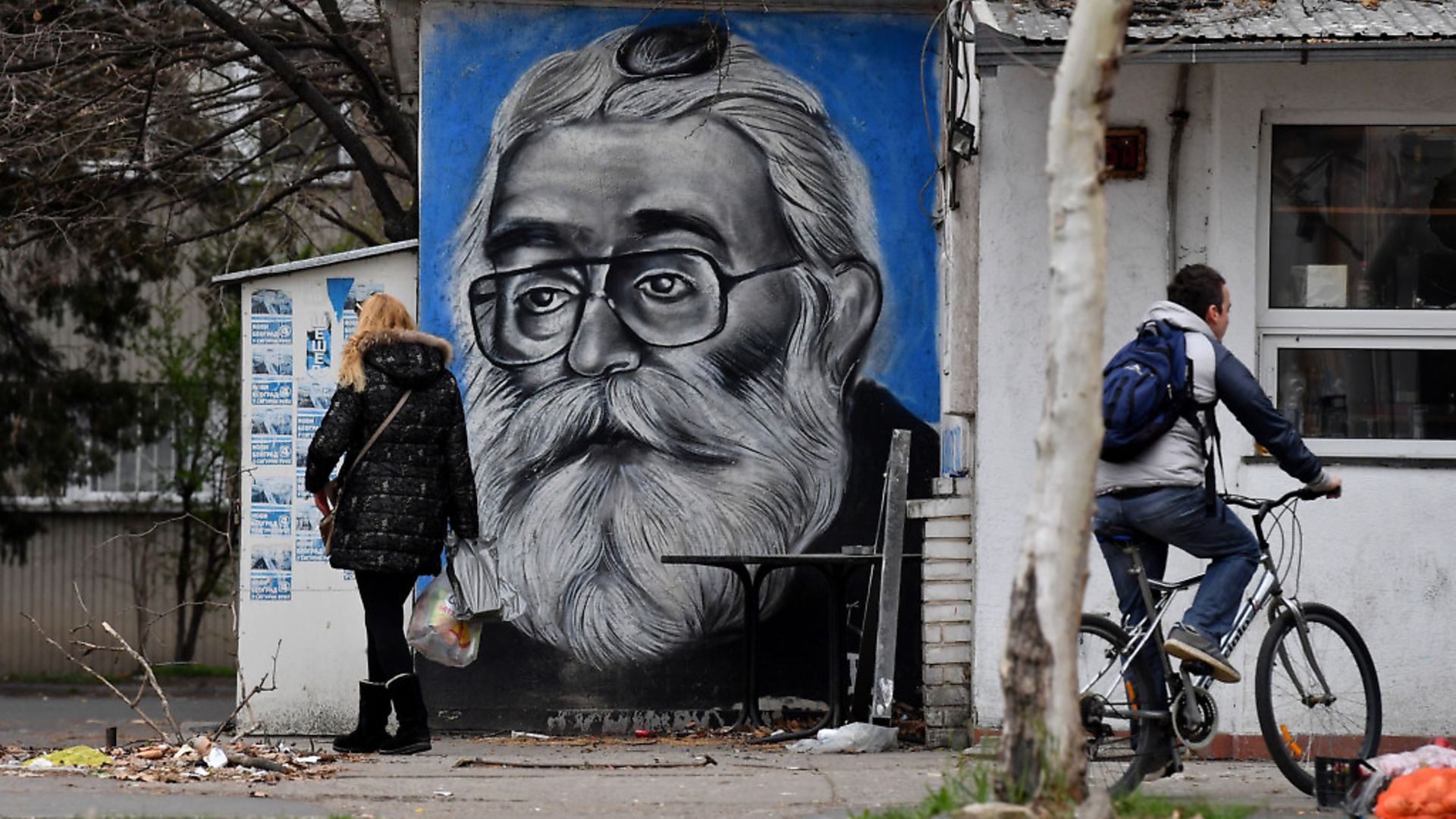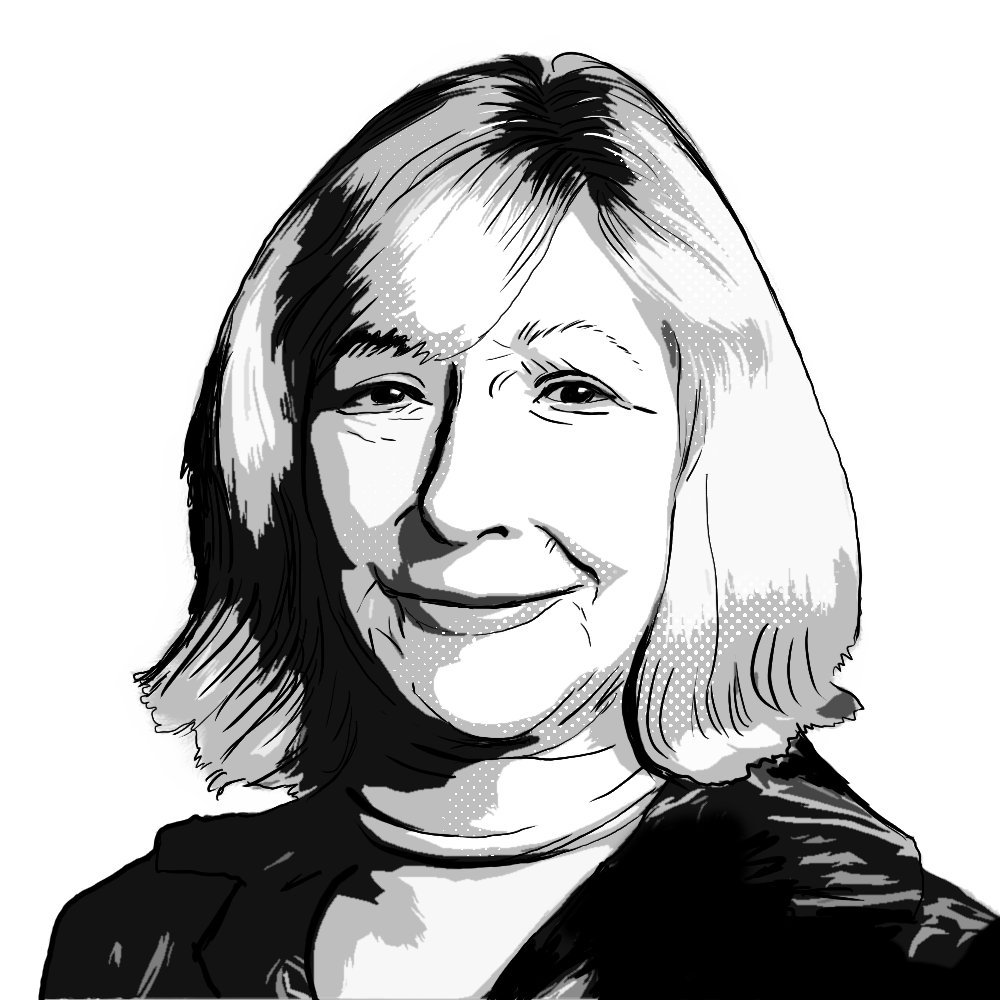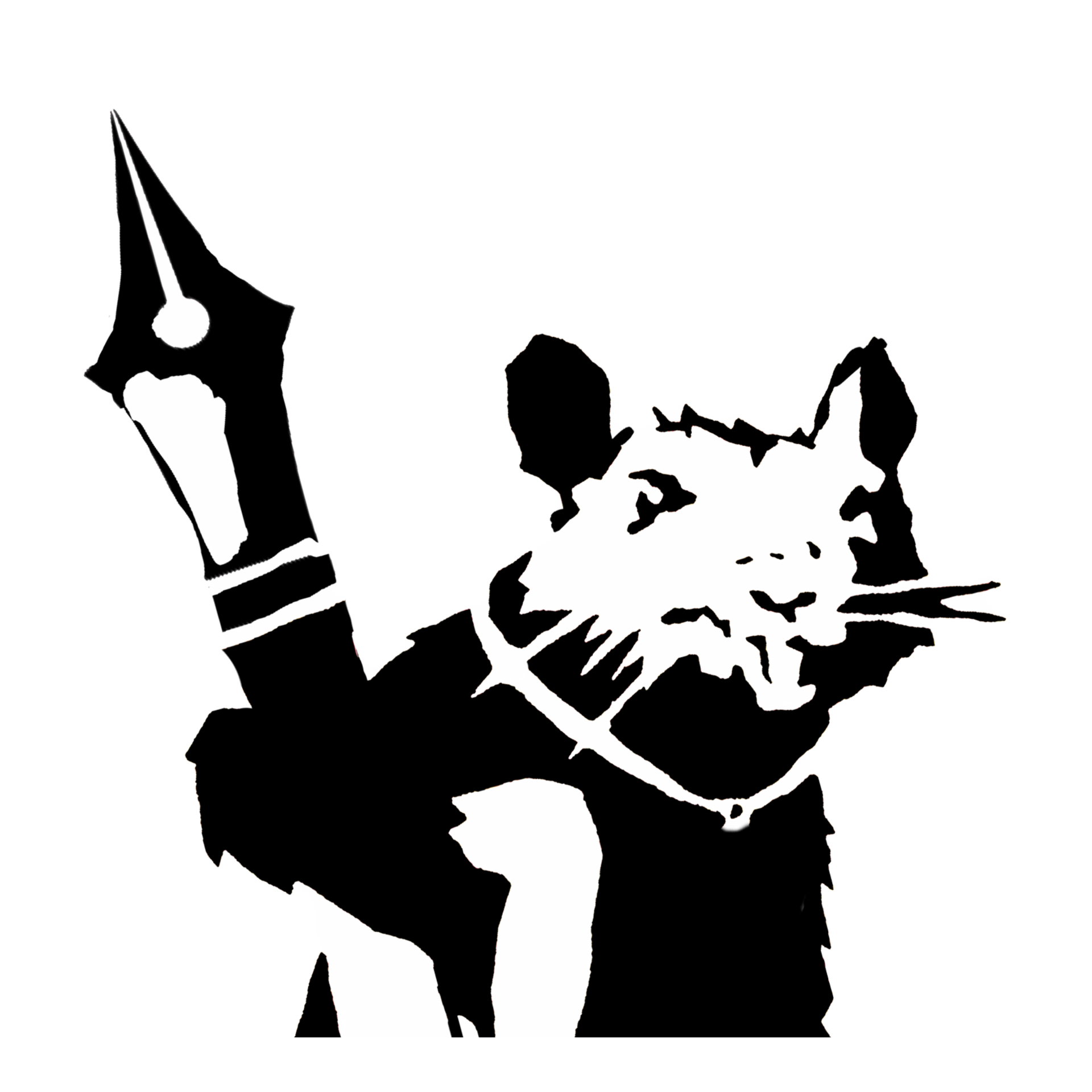
Albinko Hasic reports on Radovan Karadzic and his growing status among ultra nationalists and anti-Muslim zealots despite being behind bars.
In March, Radovan Karadzic saw his 40-year sentence for genocide and war crimes prolonged to life behind bars by an appeal court at the Hague. Yet despite the fact that Karadzic is now destined to live out his days at the UN detention centre by the North Sea, his hateful ideas, philosophies and lies continue to live freely.
Indeed, while Karadzic himself is gradually forgotten by much of the wider world, there is a constituency among whom his influence is growing. The Bosnian Serb leader has becomes an increasingly venerated figure among the global far right in recent years. Anders Behring Breivik described him as a “revered crusade warrior and European war hero”, while fellow mass murderer Brenton Tarrant played a Serbian nationalist song praising Karadzic in his car during his attack in Christchurch, New Zealand, earlier this year.
For both men – and others who celebrate him online – Karadzic’s leading role in the campaign of extermination of Bosniaks (Bosnian Muslims) provides inspiration for their efforts to rid the West of foreign invaders, through sheer force and brutality. But deeper than that, Karadzic’s masterful twisting of the truth, misrepresentations, and historical lies have found new hosts, as a potential blueprint in the age of fake news.
Karadzic utilised propaganda to set a narrative of mass fear. He mobilised the Bosnian Serb population to rise up against their neighbours by introducing faux evidence of looming attacks and conspiracies, and by putting into question well-established historical truths.
By co-opting the media, smearing well-established journalists, and introducing a sense of immediate danger, Karadzic spread the idea of Serbs as those on the front line in the fight against extremist Islam, and the defenders of European Christendom. Today, those that prescribe to similar ideas have adapted these tactics to the digital age. Twenty five years on from the Bosnian War, Karadzic has come to be glorified as a trailblazer.
The man himself came from a blue-collar upbringing. Born in the small Montenegrin village of Petnjica to a cobbler father who was jailed by the communists for his (royalist, nationalist) Chetnik activities during the Second World War, and a peasant girl, he arrived in Sarajevo in 1960 as an awkward 15-year-old, playing poker with neighbourhood boys and eating baklava on credit.
He spent the next 30 years of his life in the city, studying psychiatry at the University of Sarajevo School of Medicine before working at a psychiatric clinic. Karadzic routinely forged medical papers, issuing fake medical and psychological evaluations to people who wanted early retirement or to criminals trying to avoid punishment by pleading insanity.
As he became involved in the city’s criminal underground he also began to make connections with Serb right wingers and their political networks. By the mid-1980s, Karadzic’s embroilment in this seedy underworld at the crossroads of criminality and far right politics saw him serve time in prison for embezzlement and other financial crimes.
Following his stint in prison, Karadzic became politically active, founding the nationalist Serb Democratic Party in 1989. From the very beginning, the goal was clear – to create an autonomous greater Serbia by taking over local municipalities and setting up para-governments at various locations throughout the country.
Seemingly immune to the multicultural and multi-religious nature of the Bosnian capital, Karadzic would – once the war came – help orchestrate the complete encirclement and shelling of the city he called home and the friends he made there. Karadzic would later tell Western journalists: “We don’t have a single sniper in Sarajevo. Only Muslims use snipers. We have to take them down with artillery and since we were not ready for this war, our gunners are badly trained. They often miss and hit the wrong building. They need more practice. We’re working on it.”
It was the longest siege of a city in modern history with an estimated death toll of 14,000 people. Referencing the Markale Massacres, the targeted bombardments of Sarajevo’s civilians in a crowded street market sending blood, arms, legs, and pieces of flesh to be strewn about, Karadzic would later claim it was, in fact, the Bosnian government who staged the event with mannequins and cadavers.
Despite Karadzic’s meagre beginnings, through greater Serbdom, he positioned himself to become a right-hand man in Bosnia for Serbian autocrat Slobodan Milosevic. Much like Joseph Goebbels found a receptive host for his treasure trove of misinformation and weaponised historical revisionism, Karadzic understood that Milosevic shared his world view.
For Karadzic, non-Serbs, particularly Croats and Bosniaks represented the dangerous other. Those who did not fit the category of Orthodox Christian Serbs were immediately branded as enemies, and more importantly, historical enemies of the Serb people. Karadzic’s paranoia and eventual blood lust stemmed from numerous factors, but some important ones have always been historical revisionism historical negationism, and chauvinism.
The entire Croat people were represented by the Ustashe, the Second World War reactionary ultra-nationalist Nazi sympathizers, hell-bent on the destruction of the Serb people through genocidal death camps. Despite this classification, Karadzic begrudgingly admitted he could live with them. The Bosniaks, on the other hand, were not immune from his ultimate judgment. Their sins could never be forgiven.
For Karadzic and the Serb nationalists, more than anyone else, the Muslimani (Bosnian Muslims) represented foreign invaders, occupiers, and the national and religious enemies of Serb people everywhere. The ‘Turks’, (a pejorative term used exclusively for Bosnian Muslims) were historical traitors to the European tradition of Christianity (in particular Orthodoxy) and were nothing more than Islamic fundamentalists.
He was famous for saying: “Serbs and Muslims are like cats and dogs. We cannot live together in peace, it’s impossible.” Harold Lasswell, the 20th century American political scientist, once wrote: “The enemy must be represented as a menacing, murderous aggressor, a satanic violator of the moral and conventional standard, an obstacle to the cherished aims and ideal of a nation.”
Karadzic understood the underlying myths and historical misinformation that motivated those on the right wing. Not only did he prescribe to these ideas, but he also developed them further, and propagated them to bigger and bigger audiences, even on a personal level through his poetry.
Strictly selective about the information that was available during the course of the war, Karadzic and Milosevic created a sort of virtual political reality, and with very little alternative news seeping through the cracks, a constant repetition of lies as truth.
Like Goebbels, Karadzic was above all, a trained manipulator. Attempting to draw continuation through the historical record, Karadzic peddled half-truths and lies on a routine basis to rabid supporters and Chetnik paramilitary groups. He even turned his world view on the West, reminding the US and Europe that the First World was kindled by a Bosnian Serb, and that it was the Serbs who defeated Nazi Germany in Yugoslavia, despite the fact that some Serb nationalists cooperated and assisted the Nazis, even helping them round up Jews, Croats, and Bosniaks, and committing numerous documented war crimes.
The fact that droves of Serbs were part of Tito’s multinational Partisan forces mattered little to Karadzic because it simply did not fit the narrative.
Karadzic’s boss, Milosevic was famously obsessed with controlling the media narrative in Serbia and the greater Yugoslav region. In the late 1980s and early 1990s, stories such as Croats dumping waste in Serb-dominated villages in Croatia made the rounds. Karadzic fuelled the flames in Bosnia too. In 1992, shortly before the mass killing of over 3,000 Bosniak and Croat civilians in Prijedor, Karadzic’s deception machine went to work. Radio stations in the area accused Bosniak and Croat doctors of injecting drugs into Serb women, making them incapable of giving birth to male children and forcing Serb women to abort if they were pregnant with male children.
During the vicious siege of Sarajevo, clutching to anything resembling justification, Serbian television made claims that Serb children were being fed to the lions at the Sarajevo zoo. In order to justify the murder of more than 8,000 men and boys in Srebrenica, television presenters in Pale concluded that the “terrorist threat”, in the area had been halted.
It wasn’t just the mass murder. Karadzic would often tell reporters that Serb soldiers evicting people at gunpoint from their homes were simply, “helping them go home”. Fear became an instant hit. Painting Serb civilians as enemy targets at every turn, Karadzic tapped into unbridled fear, anxiety, and nationalist fervour to concoct outrageous stories and lies in an effort to heighten tensions and advance his cause.
Karadzic would ask ordinary Serbs in Bosnia – ‘even though you lived with your neighbour for decades, could you really trust them?’ Karadzic played into these fears and fed Milosevic’s propaganda machine at every turn.
Dr Muradif Kulenovic, a psychiatrist who treated rape victims in the Croatian War, was later asked how ordinary, psychologically healthy people could be turned into a hateful machine for rape. He answered: “Warmongering propaganda in the newspapers, radio, and television prepared the Serb people for the ‘final solution.’ It was necessary to produce hatred of Croat and Bosnian people… Without hatred, the war would not be possible.”
The lies and propaganda paid dividends, especially stories based around revenge mythology. The Serb people were on their heels, surrounded by enemies, and were the historical victims of hundreds of years of oppression by the fascists and the Turks.
One of Karadzic’s chief lieutenants and propagandists, Radoslav Brdjanin routinely offered moral encouragement to soldiers committing war crimes, as well as the guards at infamous concentration camps Omarska, Trnopolje, and Keraterm.
The Bosnian Serb armies, trained, supplied and aided by Serbia, ethnically cleansed entire regions in Bosnia, culminating with Srebrenica and other massacre sites, all with the belief that they were not just the pride of the Serb people, but doing God’s work by ridding Europe of that ancient enemy, Muslims.
In some circles in Moscow and Athens, Karadzic was hailed as a religious warrior, on the front line in the war against enemies of Christianity.
The religious warrior disappeared into the night following the eventual Serb defeat in Bosnia. Alienated even by his former boss and abandoned by his circle of allies, the ‘good doctor’, hid in Belgrade for more than 13 years, evading justice, working as a local quack under the name Dragan Dabic.
Shameless until the end, Karadzic continued to propagate his constant lies, even during the course of the lengthy court proceedings, arguing Bosniak leadership purposefully staged massacres in order to paint the Serbs as villains.
Chetniks continue to gather in Bosnia and Herzegovina, on an annual basis, reminding Bosniaks and Croats that the river “will run red with their blood, once more”. Karadzic’s vile rhetoric and propaganda have become part of the foundation, and it falls on historians, journalists, and other professionals to expose the inaccuracies and lies which fuel the hatred. Ordinary people must also reject the propaganda which is still parroted and trotted out as a defence to war crimes. Further, the political project catalyzed by Milosevic, Mladic, Karadzic, Seselj, and others continues to exist in the form of the Republika Srpska entity. If the international community is serious about truthful reconciliation and justice, it must start with the abolition of this quasi-state, carved out through ethnic cleansing and genocide.
The reality is, Karadzic’s vision of the world is gaining followers in this new age and presents a danger not just to Bosnia or Bosniaks, but to a peaceful world in general.









